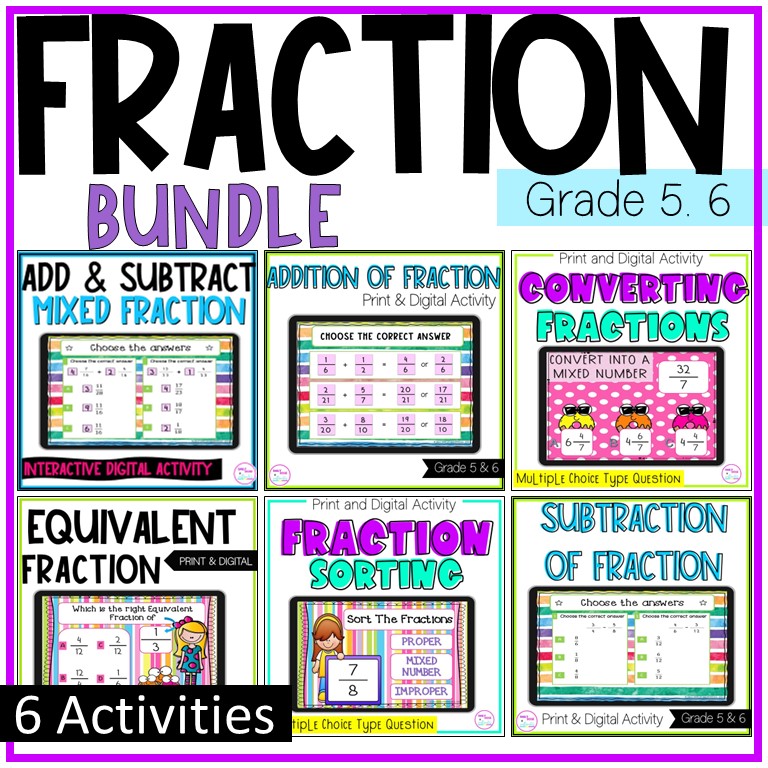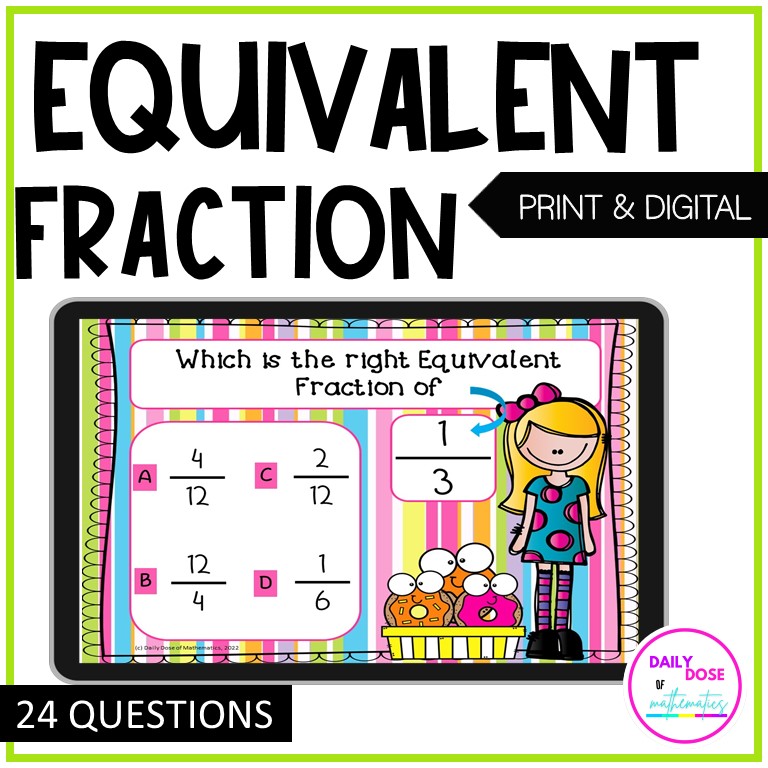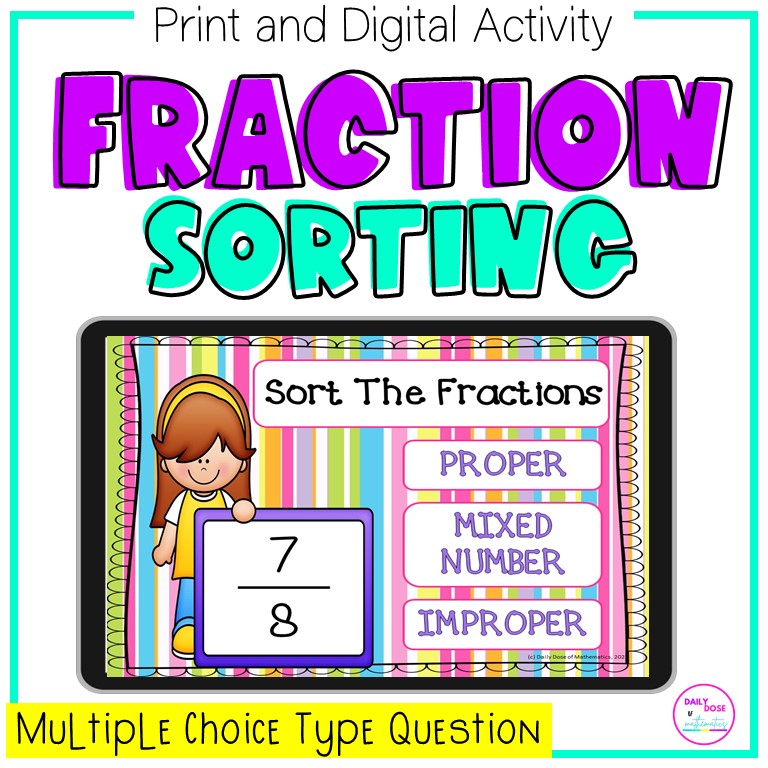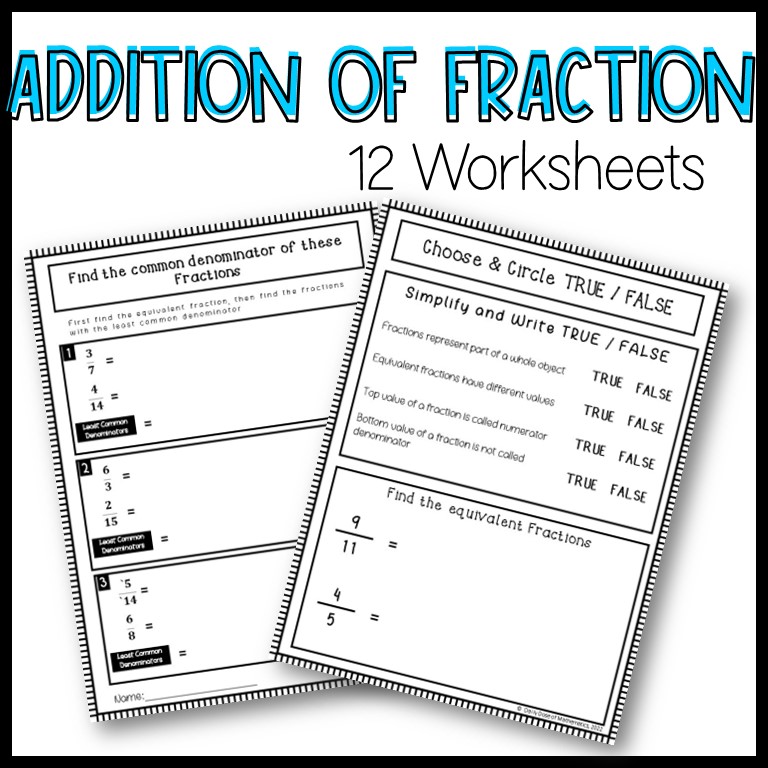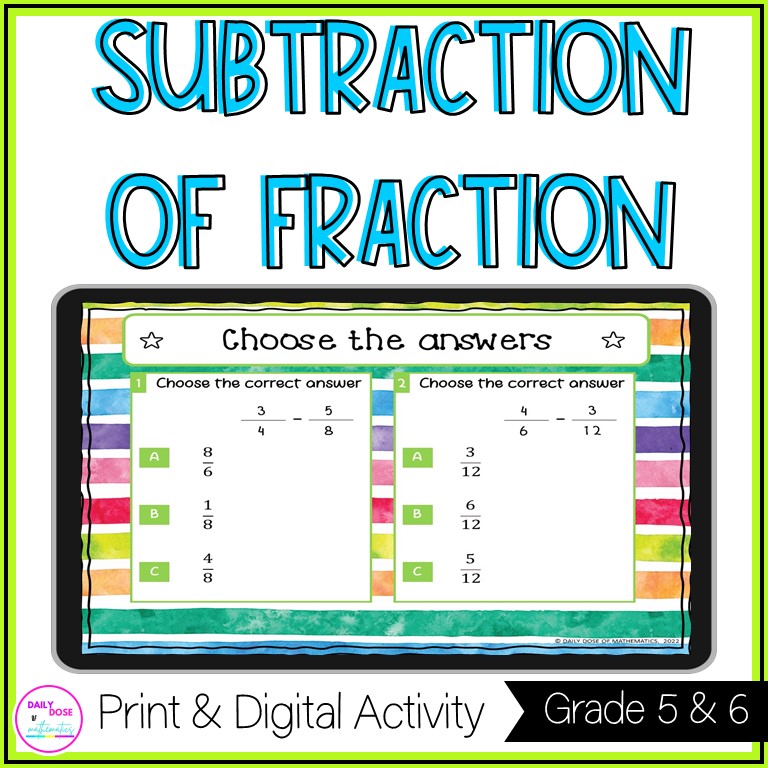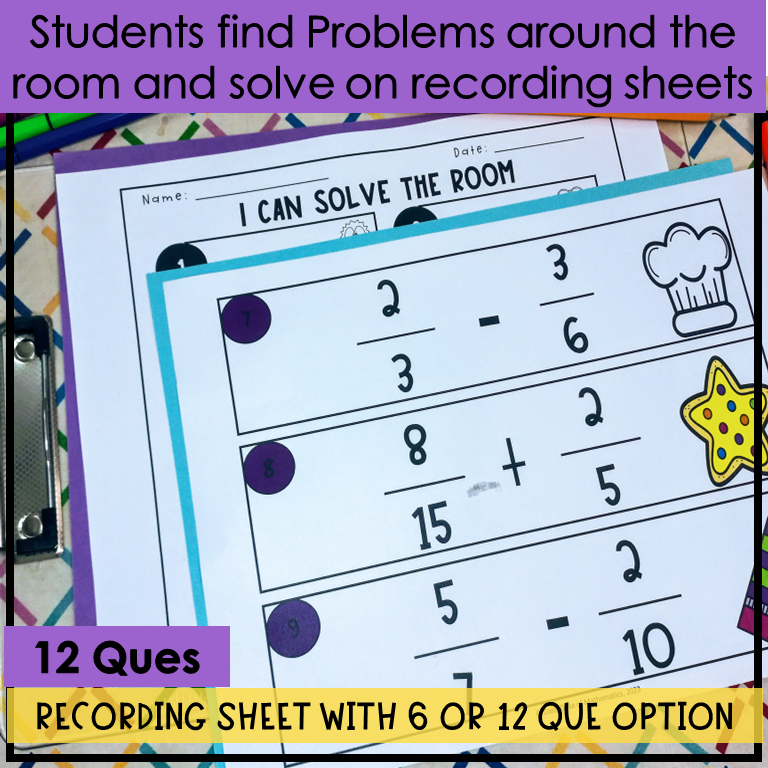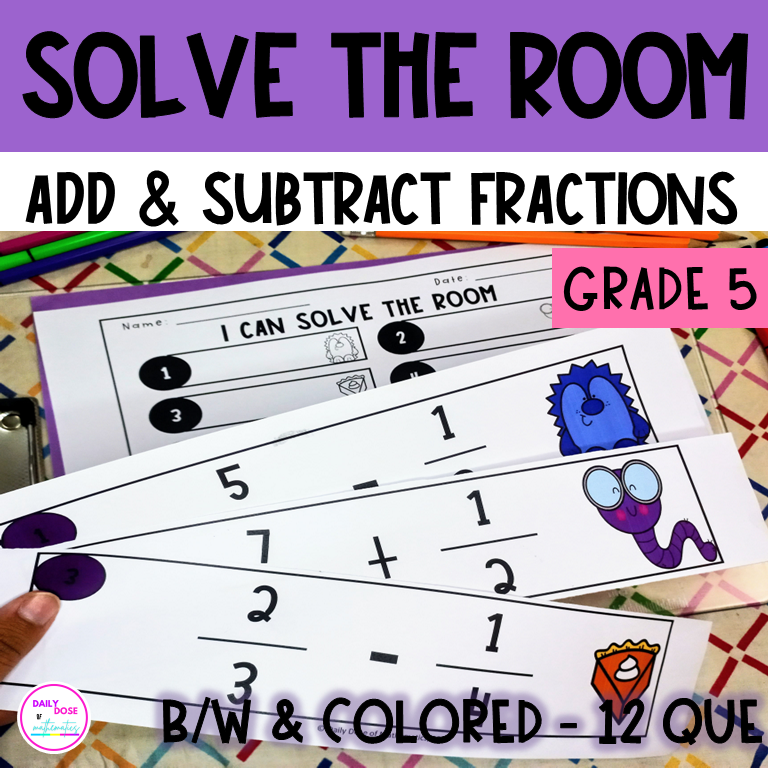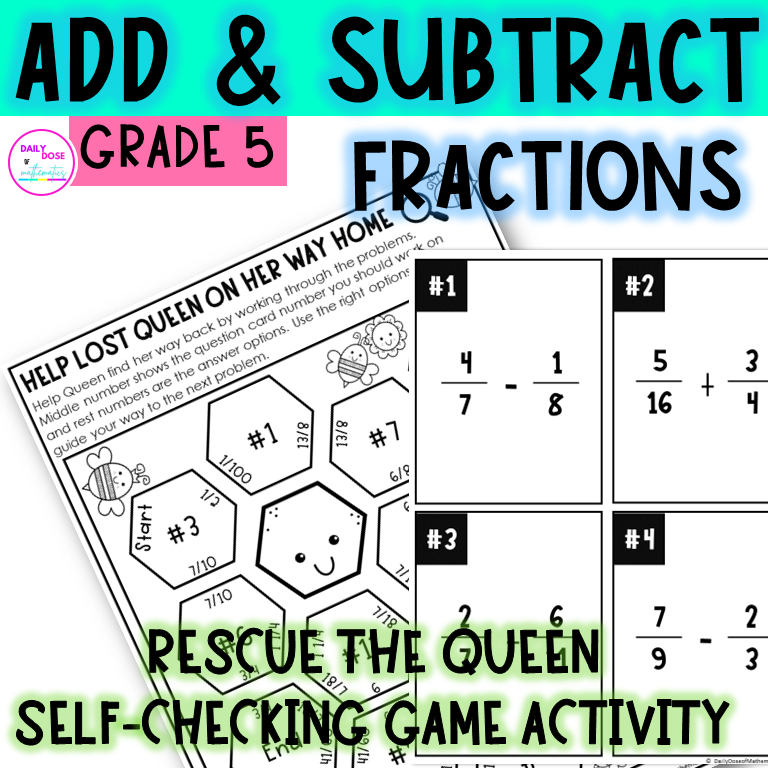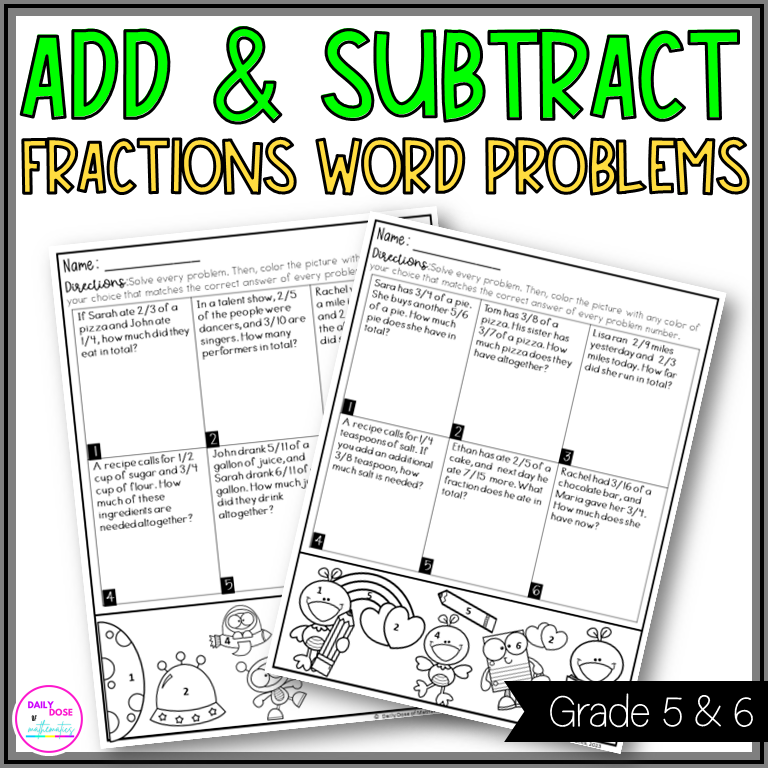3 Ways To Increase Excitement In Your Fraction Operations Lessons
Are you a busy elementary math teacher juggling to teach fractions in your classroom? Do you feel like you need more help or resources to teach your kids effectively? I get it. We all want to be a rockstar teacher who wants their class to ace fractions practice and just about solve any problem thrown...Are you a busy elementary math teacher juggling to teach fractions in your classroom?
Do you feel like you need more help or resources to teach your kids effectively?
I get it. We all want to be a rockstar teacher who wants their class to ace fractions practice and just about solve any problem thrown their way.
Sometimes our lessons just do not go as well as we planned and the guilt of that I could have done better creeps in, doesn’t it?
You aren’t alone. I think almost all of us teachers have faced the difficulty of inattentive students in our math classes.
While you’re explaining fractions, some students might be looking puzzled and others downright lost.
That nagging feeling of not being engaging enough haunts you. You want your students to feel confident and amazed by what you teach not confused.
Knowing What Is a Fraction?
If you are just introducing fractions to your class then you just need to start by explaining what a fraction really is. You kids first need to understand the visual and logical side of fractions and know a fraction represents part of a whole.
You can even use visual aids such as pizza slices or chocolate bars to give kids some visuals to hang their imagination on.
Emphasize the terminologies used such as numerator which is the top number and represents the part as well as the denominator which is the bottom number which represents the whole.
All about Fractions to explain:
Let’s be real fractions is a vast topic and there is a lot our kids need to understand before they can actually solve any complex fractions operations.
Topics such as Equivalent fractions and Proper and Improper Fractions are crucial things to understand for elementary students before they can start adding and subtraction fractions.
So naturally next explain to your kids what these terms are.
Equivalent Fractions:
Here you need to explain to students that different fractions can represent the same quantity.
As an example, 1/2 and 2/4 both represent half of a whole. It’s better to use visuals to help students grasp this concept.
Looking for a fun activity to use inside your class for Equivalent Fractions? Click HERE
Next comes…
Proper vs. Improper Fractions:
Explain the difference between proper fractions and improper fractions by observing the numerator of the fraction.
I always tell my kids to just look at the fraction and see if they can immediately tell how much pizza they can eat without simplifying the fraction any further. If you can then tell, it’s a Proper fraction else what you have is an improper fraction.
Looking for a fun activity to use inside your class for Proper and Improper Fractions? Click HERE
Mixed Numbers Operations:
I lead the explanation here as the name suggests. It is basically a mixture of 2 types of numbers i.e. whole numbers and fractions.
For example, 1 1/2 represents one whole and a half.
Looking for a fun activity to use inside your class for Mixed Number? Click HERE
Addition and Subtraction of Fractions with unlike denominator:
And this is where the fun begins. Now Once students have a solid grasp of these basics, it’s time to move on to addition and subtraction of fractions.
Here’s a step-by-step approach to teaching these operations effectively:
Addition of Fractions with unlike denominator:
First of all, explain that for addition fractions must have a common denominator (the same bottom number). Use visual aids to show how fractions with different denominators can be converted to fractions with a common denominator.
Next, tell your kids in order to add fractions, they need to add the Numerators (the top numbers) while keeping the common denominator unchanged. Use examples and encourage practice
Tell them to simplify the result by finding the greatest common factor (GCF) between the numerator and denominator and dividing both by it if necessary.
It is really important to know the importance of practicing here. Instruct them to Practice, Practice, Practice. You need to provide plenty of exercises for students to practice adding fractions with different denominators. Also, be sure to gradually increase the complexity of the problems.
Subtraction of Fractions with unlike denominator:
If they have already mastered adding fractions then subtracting fractions would be like a walk in the park now. But similar to addition emphasize the importance of having a common denominator for subtraction as well. You need to reinforce this concept using visual aids.
Tell kids to subtract the numerators while keeping the common denominator unchanged. Also, remind them to pay attention to borrowing when necessary.
Similar to addition, teach students to simplify the result by finding the GCF and reducing the fraction when possible.
For practicing check out the sun and engaging digital and printable adding and subtracting fractions resources you can use inside your class.
3 Ways to Infuse Fraction Addition Inside Classroom:
1. Solve the Room Activities
If your elementary math students are not excited about math, you must try this math activity once in your class. Let’s face it.
We are maths teachers, and we want our kids to solve maths more and more so they can develop the muscles needed to gain confidence.
Especially during the elementary years when students are still nailing the basics, it’s more than ever important to get their foundations solid.
This is the reason why I use Solve the Room activity in my 5th grade math class throughout the year, especially while teaching fractions. This activity makes the tedious task of solving math problems an active and exciting activity.
Solve the room creates not only movement but also excitement for students. You can also use these to test student’s knowledge in an exciting way.
If you want to try one out, I happen to have one FREEBIE in my TPT store
Benefits of using Solve The Room
First of all, you can use them as a center station activity.
If you are one of those people who does not like your students just to sit and do their work. But if you want them to be up and active, then this is the perfect activity to try.
It gets them to wiggle out and ultimately behave better during the rest of the school time.
From a teacher’s side, you get to see your students having fun with solving math which is a rare sight to have.
You can use it for practicing any 5th grade math skill, like solving fractions and decimals or order of operation to the volume of a rectangular prism.
You can even use them as exit tickets or assessments to know what skills your students lack understanding of.
How does it work?
First of all, you need to set up the activity. You need question cards or flashcards that your students will be working on.
Secondly. you need a recording sheet where they can show their work and write their answers.
After you have set the whole activity, now is the time to set up your room. Just place the question cards in different places inside your classroom and give each student a recording sheet to write their answers.
A recording sheet is just a piece of paper with numbers and boxes already drawn on it to make it easier for your students to record the correct answers to the question.
Students can use the back of the recording sheet to show their work if needed.
Students will move around the room, find the question card, solve the math problem written on the card, and record their answers on the recording sheet. They continue moving from one station to another until all the stations are solved.
So to set up your own Solve The Room Activity, here are the things you need to do:
- Print the Question Flash Cards to place in your classroom
- Print the Recording sheets for every student
- Have your students walk around the room solving the question
- Recording the answers while you help them whenever they get stuck on a problem.
Although this activity is very easy to set up, I know it can be frustrating for some. So, if you don’t want to set up the activity yourself, I have a set in my TPT shop that you can purchase for your 5th grade math students.
Want to JOIN in on the Insider FUN and FREEBIES!
2. Save the Queen – Maze Activity
Now you might be thinking about this Save the Queen Maze activity. So let me explain.
Save the Queen Maze Activity is simply an exciting way I use maze activities inside my classroom. Instead of just letting my kiddos solve problems with maze worksheets, I try to incorporate stories inside them.
So here is how it works:
In the story, the Queen bee goes out into the wild and loses her way back home. Your students must work through the problems to bring her back to her hive.
This is how the activity progresses. It contains a maze with a number inside the honeycomb. The numbers represent the task card your student must solve to progress through the maze.
The student solves the problem and looks for the answers to know which problem to work on next. Each problem solved brings the bee closer to her home. A total of 10 to 12 problems are needed for the bee to be back home safely.
Not only this but kids are also awarded congratulatory cards to help them celebrate their achievements.
Want to try one with your class. Check it out here.
3. Color by Number Worksheets
Who does not love coloring? I know my kids love them. Every time I use any sort of coloring activity with math problems, my whole class fills with excitement and joy.
This is why you should have one for every topic in my class. Let’s be honest most kids do not like to practice math, so this is your best bet to keep them engaged.
All you need to do is just have a simple worksheet you want them to work on, and along with that give a single piece of extra paper for them to doodle on.
For every problem they solve, let them draw some fun stuff that they want on paper and let them color it. This keeps the creative juice flowing inside the brain and excitement running in your class.
Coloring is relaxing for kids. This is the very reason why I have made these color by number worksheets to go along with adding and subtraction fractions along with word problems.
Want to know how to make your kids excited about the perimeter of composite figures check this post out!

